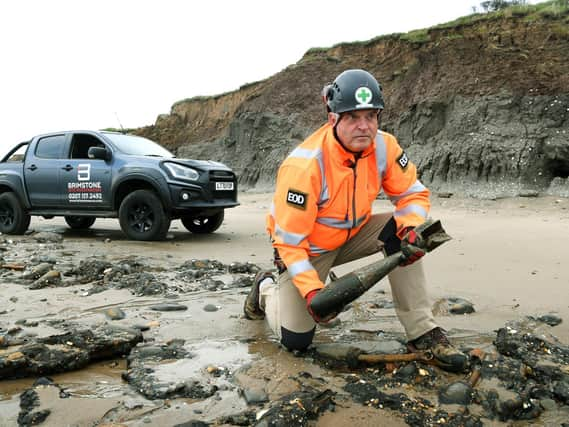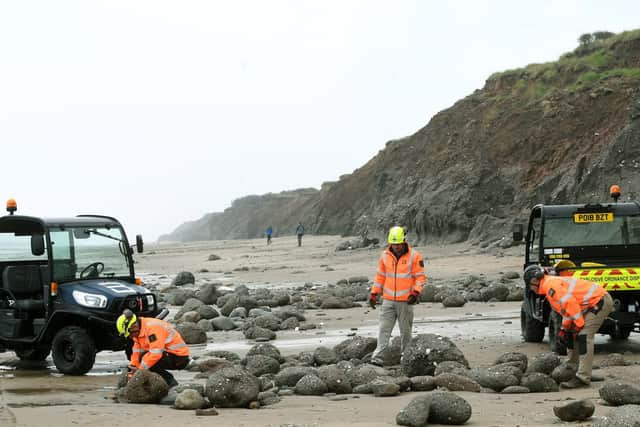Meet the team clearing up 650,000 bombs which are 'remnants of the Cold War' from Yorkshire's coastline


Three ex-servicemen have been employed on the Herculean job after private company Brimstone Site Investigation was awarded a four-year contract –the first of its kind – by the Ministry of Defence earlier this year.
Since February they have cleared 10,000 items of ordnance and there are at least another 650,000 to go.
Advertisement
Hide AdAdvertisement
Hide AdFor the best part of six decades the isolated range at Cowden, perched on the fast-eroding mud cliffs of the Holderness coast, was a training ground for the Home Guard, Army and finally RAF


Huge numbers of shells rained down, some fired by tanks aiming at moving targets speeding down a railway track against a backdrop of the North Sea.
When the RAF took it on in the 1960s they set up static targets on the clifftops and later out at sea. American A-10 Tankbusters would drop bellyfuls of ammunition there, as did Phantoms, Buccaneers and Hawks.
Those targets are now mostly on the beach and with them a huge amount of ordnance – up to six or seven types at any time – can become exposed on the muddy shores at low water.
Sometimes literally thousands can be lying there.
Advertisement
Hide AdAdvertisement
Hide AdThe task for Paul Duckworth and Tony Simpson, who are both ex-RAF and Dan Field, who is ex-Army, is to render them inert by blowing them up in controlled explosions.
Mr Duckworth, formerly RAF chief technician of 5131 Bomb Disposal Squadron, and who served in Kosovo and Iraq, was at Cowden for six years until 2004.
He was more than happy to dissolve his heating and plumbing business and return to the “best job” he ever had in the air force.
Until 2013 an RAF bomb- disposal team worked full time at Cowden.
Advertisement
Hide AdAdvertisement
Hide AdFor the next five years a team visited every two or three weeks. After the disbandment of the team two years ago, the Army tried to keep on top.
But residents noticed a big increase in ordnance and the coastguard and Humberside Police were getting called out every couple of weeks as erosion caused more of the cliffs to crumble away.
Mr Duckworth said: “In the last 21 years there’s been 40 or 50 metres gone. Most of the targets went over on the beach. There’s still more falling from the cliffs. It’s a very unique situation and I think the MoD realised they had to do something.
“The Army, because of the disbandment of RAF bomb disposal, had to take on that role as well, which became very difficult because they too are struggling on manpower and resources. We are the first civilians to be given such a role in the UK.”
Advertisement
Hide AdAdvertisement
Hide AdThe ordnance includes 28lb British bombs, which contain a high-explosive charge and “should not be touched even though we still get reports of people picking them up, posing for photos and putting them on social media”.
Mr Duckworth said: “Because they are called practice bombs doesn’t mean to say they are inert.
“They all contain explosive charges and it is likely that approximately 20 per cent haven’t gone off. We can’t tell the difference between the ones that are live and the ones that aren’t. They all have to be treated the same.”
Local residents are told when bombs are being blown up and red flags go up to warn visitors on the beach.
Advertisement
Hide AdAdvertisement
Hide Ad“We’ve put information sheets at the local caravan sites and the cafe at Mappleton,” said Paul Duckworth. “It’s a case of keeping people informed of exactly what we are doing.”
The team is now hoping to gain permission to avoid the trek to use the ramp at Mappleton and have their own built, giving them access from the range instead, saving time.
Whatever happens, their expertise will be needed for many years to come.